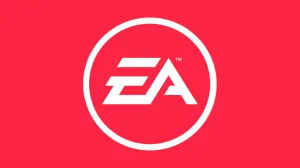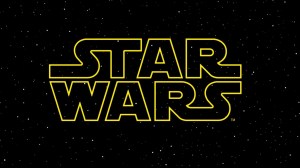
Ramon Villalobos is making his mark at Marvel Comics. Last summer he drew the extraordinary E is for Extinction mini-series during the Secret Wars event. Now he has teamed up with writer David Walker on the new ongoing series Nighthawk. Together they are exploring one of Marvel’s most violent characters and the repercussions of his action.
Videos by ComicBook.com
ComicBook.Com had the opportunity to speak with Villalobos at HeroesCon in Charlotte, North Carloina. He discussed Japanese influences, the city of Chicago, and attitudes towards violence. However, the conversation began over a sketch Villalobos had drawn earlier that day of Darkseid.

We need to start with a really important question: What kind of shoes does Darkseid wear?
Ramon Villalobos: I don’t know because he wears those long boots, so it would be weird to draw him in shoes. I only put people in shoes when it makes sense for what they are wearing, you know what I’m saying? When people ask me what sneakers Batman would wear, I usually am like, “Well, Batman doesn’t wear sneakers. He wears boots.”
What about old school Kirby Darkseid – the one who would just show up on Mr. Miracle’s couch to be a dick – if he’s just lounging, what is he wearing?
Villalobos: You know what? Darkseid when he was reborn -Grant Morrison’s Darkseid-
When he is a gangster in Seven Soldiers of Victory?
Villalobos: Yeah! That Darkseid I feel would wear some Lebron 13’s, all black murdered out. Because like Lebron is a big asshole and so is Darkseid. That fits, you know? And they are kind of ugly and he is really evil, so that makes sense to me. F**k LeBron James. Put that in the article.
You got it. So besides hating on LeBron, what are you reading and watching when you are not drawing Nighthawk?
Villalobos: It is a weird question. Not weird like it is a bad question. It is weird because I am trying to think about what I have been consuming. A lot of times when I am rushed on deadlines, I watch a lot of Bar Rescue because it has a real familiar pattern to it. A lot of my shows are ending right now; that’s the problem. So I am trying to think about it. Real World Road Rules sometimes, whatever is on TV.
Do you look for the things that can help you relax so you keep your focus on the work?
Villalobos: There’s a lot of news because of everything that is going on right now. I have been listening to David Foster Wallace audio books and watching news shows. I listen to the Young Tricks every day and Sam Seder’s podcast and random stuff. Reading: I’m looking at a lot of manga lately. Jiro Taniguchi is the guy that I am really into. I usually pick up something that he did or some Sunny by Taiyo Matsumoto. I haven’t been reading a lot of comics. It is hard to do that, but I flip through a lot of stuff. Those two are the two artists that I look at a lot while I am working though.
Do you find their approach to a page affecting your own work at all?
Villalobos: I try. The thing about Japanese comics in the structure and the way they are made is they get a lot of time to linger on moments that American comics don’t. An American comic is twenty pages; it costs so much money. So I think everyone involved is trying to give readers as much information as they can. We are trying to push stories forward. In a lot of Japanese comics, that is not really a concern. They can focus on little moments and have them drawn out. It’s not a luxury that we are afforded in American comics.
I think that shows in something like Nighthawk, too, because it is a viciously paced comic.
Villalobos: Yeah, it is fast.
You really jam some panels into certain pages and that exacerbates the violence, I think.
Villalobos: I try and pick shots that convey tone more than information when I can. There is a scene in this issue where he is running away. I was hanging out with Nick Dragotta and we were talking about how I would draw him running away. He was like, “Just draw the feet running.” I am like, “Oh, that makes a lot of sense.” We were talking about comics we had seen where people show interesting things instead of the most obvious thing to show.

With Nighthawk, what are you finding to be the interesting part of it? What is attracting you to these new pages versus what you have done in the past?
Villalobos: The big thing for me that is different is I use a lot of black, drawing ink, where I generally like to do clear line. But it takes place at night. It is Nighthawk. I wanted to use a lot of black area. The big, stylistic difference is it is a youngish story. I am trying to make it young. It is a youngish, black Chicago book, so I look at a lot of streetwear blogs, look for things that are in Chicago. I went to Chicago; I listen to drill music; I watch music videos from artists that are out there. I try to capture some of that energy and style (the way people are dressed and carry themselves). I try to get all of that in there.
It is pretty new for comics. I always say this, but most comic aesthetic is just feeding in on other comic aesthetic because a lot of the comic artists are comic artists because they grew up reading comics. So they are informed by other comics.
I feel like there is a generic city setting in a lot of superhero comics. Are you trying to make sure Chicagoans know and recognize their own streets?
Villalobos: I try, but I am not that good. I wish I could do a better job. I put so much time into the figures that a lot of times my backgrounds are lacking, but I try really hard to capture that. I have specific pictures that I took when I was in Chicago. I’ll try and take a light post that I saw there and put it in the background. But it is tough with deadlines to make it like you would want it to look.
I think one reason Nighthawk reflects Chicago so well is the visceral nature of the art. A lot of the weirdness and oddities of your work in comics like E for Extinction is gone. Nighthawk is a much more raw, violent comic.
Villalobos: I think that is also the nature of the script. I am not drawing the big superhero stuff. This is a little bit more ground level, which is exciting for me. I have never done ground level violence like that. It is something that I am interested in. I don’t like to draw a lot of the violent shit. It is not what I like to watch or read, but it is interesting to do it. I like MMA and I love pro wrestling, so I try and capture that and put it in there.

I find it interesting that you say you aren’t attracted to violence. One of the things with Nighthawk that I noticed is when you see a bone break, it looks like a bone actually breaking. It’s very carefully crafted in a way so much superhero violence is not.
Villalobos: I had a good conversation with Matthew Rosenberg of Four Kids Walk Into a Bank at San Diego last year. We were talking about how I don’t like drawing that kind of stuff because in real life, it is not a fun, ha ha thing. We were both talking about the gun violence in his books. If he has it, he likes to make it count. In real life, if somebody pulls out a gun, it is a very serious thing. In a lot of comics, people pull out a gun as a fun, exciting moment. I don’t like that attitude.
The visceral quality of what you are putting in Nighthawk is definitely more likely to make someone cringe than smile. How do you approach making sure that that is the tone you are achieving and people aren’t laughing at gun violence?
Villalobos: Well, sometimes violence is funny. Sometimes it is funny to have someone get their arm broken. But I think the level of realism in the violence is important. It is not as stylized as it is in some other books. The faces are in anguish. Everybody that gets hit is also a person that went to kindergarten. I try not to make them faceless causalities. I think that is part of it – giving characters character.
You don’t have Hellfire Club goons with blank masks running wild.
Villalobos: I try not to. There are a couple of them I think in both books, but that is just what it is. It is definitely important to try to not just play it for thrills because I think there is a lot of that. It inadvertently feeds into the culture of accepting violence in general. I am fairly pacifist, even though I like MMA and wrestling. I feel like those are both art forms, too. Street violence is different than that. I am from Stockton. I think it was twice voted the most miserable city in America. There is a lot of violence there. Just last week there was a guy who got shot. He was parked in front of somebody’s house and got shot. He was a father of four. I think it was gang related. It was a couple of blocks from my house, a place where I go past on a regular basis. I was like, “Wow, that guy in that driveway just got shot.” They found him the next morning, dead in his car.
How do you find living in Stockton affecting your approach to a work that is obviously steeped in these issues?
Villalobos: I think it is a real thing. It is not fictional. People deal with it differently, you know? For me, I just see it as a very real thing. I have cousins that are in gangs. I have not been in dramatic situations, but I have had run ins with those types of people. It is not fun. That is why I say I don’t like to glamorize it or glorify it because it is nothing to glamorize or glorify. It is better to be positive.
Chase Magnett is a freelance journalist, critic, and editor working with comics, film, and television. He has been hooked on comics since he picked an issue of Suicide Squad out of a back issue bin fifteen years ago. When Chase is not working with comics in some way he spends his time rooting for the San Francisco 49ers and grilling. He currently contributes to ComicBook.com and other outlets.








